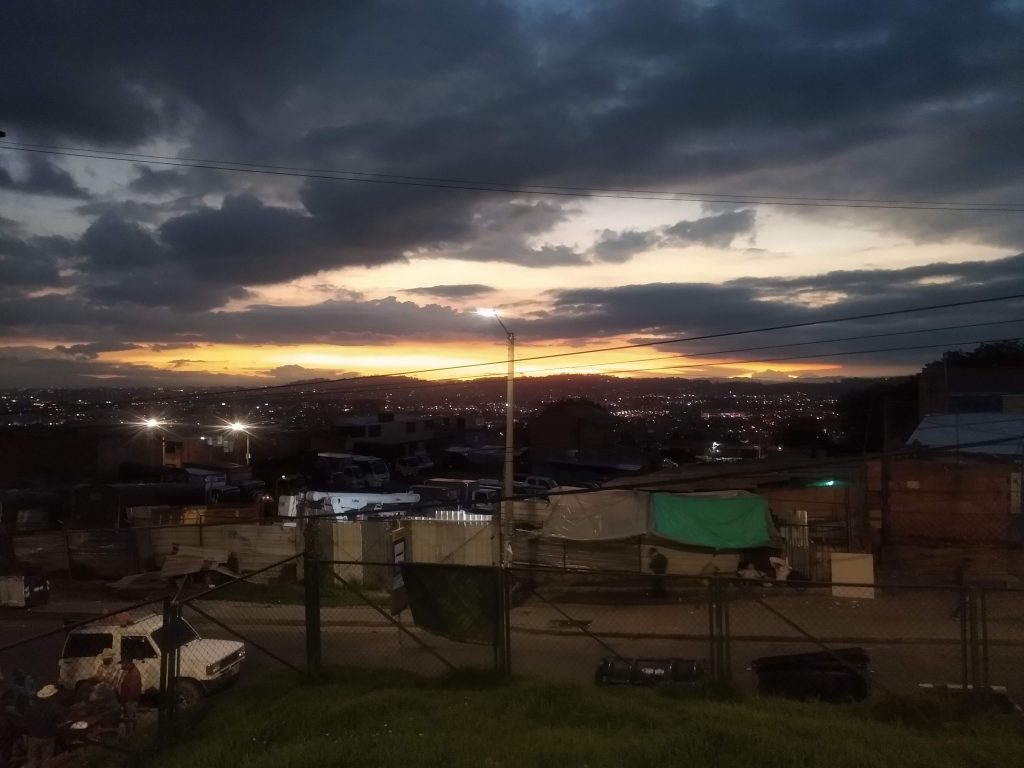
[Listen to an audio version of this blog entry here.]
A common complaint you’ll hear from Colombians when the C-bomb gets dropped in their company is that the biggest, most problematic issue at play is the drug’s use by foreigners in developed nations.
Figures on cocaine consumption across the globe support this stance. What’s more, from the perspective of those producing the «white gold» here in Colombia, ensuring it remains popular in the richer nations is vitally important for revenues. In financial terms, the local market is very minor in comparison.
Snow comforts
Nonetheless, there is a home demand. From my own observations, it’s certainly not insignificant, although it seems more prevalent in neighbourhoods of a lower socio-economic standing. By all accounts, in the developed nations, the opposite is the case.
You might counter that I’m generalising when I say cocaine use is relatively commonplace across Bogotá’s working-to-lower-class barrios, that I shouldn’t assume that what happens in one sector is replicated in another. It’s a fair point. Yet, I’ve socialised in various parts of the city to know that it’s certainly not just limited to one particular area.
In what I imagine is similar to the rest of the world where cocaine is popular, it’s men under 50 who appear to be the chief consumers. For Colombia, unsurprisingly, availability and price are big factors in this popularity.
‘There’s a belief — not without foundation — that Colombia’s «best» cocaine is sent for export. It’s difficult to know if this is good or bad for the local consumer.’
For example, as a very rough guide, products in Ireland are generally four times more expensive than Colombia. Yet, one can purchase a gram or so of cocaine in Bogotá for the equivalent of 2.50 euros. I’m pretty sure you can’t get the same amount in Ireland for ten euros. Try, so my research tells me, at least eight times that.
Easy money
Now, the majority of those I know here who are regular consumers are not what I would class as addicts. It appears to be a weekend indulgence solely. What’s more, it’s not like nieve — snow, for the uninitiated — is the first thing on their minds. No, it’s usually the world’s most popular gateway drug, alcohol, first. Then comes the cocaine. A global trend really.
One could also question the purity of what Colombians are sold. Like the country’s coffee, there’s a belief — not without foundation — that the «best» cocaine is sent for export. It’s difficult to know if this is good or bad for the consumer. Less pure may mean less addictive and less harmful. However, it could also mean the complete opposite.
Another striking feature of the cocaine business I’ve observed is the involvement of adolescents. Lads who should be at school are instead low-intensity dealers. The thing is, they’ve no classes to go to right now as schools have been closed since March due to the pandemic.
OK, considering the profit margins — they can double their money on each unit sold — they probably deal around the college gates in normal times anyway.
With all that in mind, in my early days in this country, echoing a call from then Colombian President Juan Manuel Santos, I wrote about the need to seriously debate the legalisation of the cocaine trade. Alas, in most of the richer nations where consumption is high, such a proposal doesn’t appear to have been given any proper consideration.
Thus, we continue with prohibition across much of the world which, it can be said, does more harm than good on a number of levels. No surprises there. As a society, we’re adept at applying the wrong solutions to our problems.
_______________________________________________________________
Listen to Wrong Way’s Colombia Cast podcast here.
Facebook: Wrong Way Corrigan — The Blog & IQuiz «The Bogotá Pub Quiz».




I have always wondered why it is particularly bad here (I mean the growth). Why not Ecuador or Venezuela? (they’re having a bad time in Venezuela, but I don’t see them resorting to growing it). Peru/ Bolivia seems less. ????????
Califica:
-
Me
gusta
0
- No me
gusta
0
ReportarI don’t know. It could be argued that Colombia is a wealthier country, but of course off setting that is the huge inequality and those taking the cocaine in the barrios populares certainly don’t have pesos to spare.
Does price play a part in it?
Califica:
-
Me
gusta
0
- No me
gusta
0
Reportar